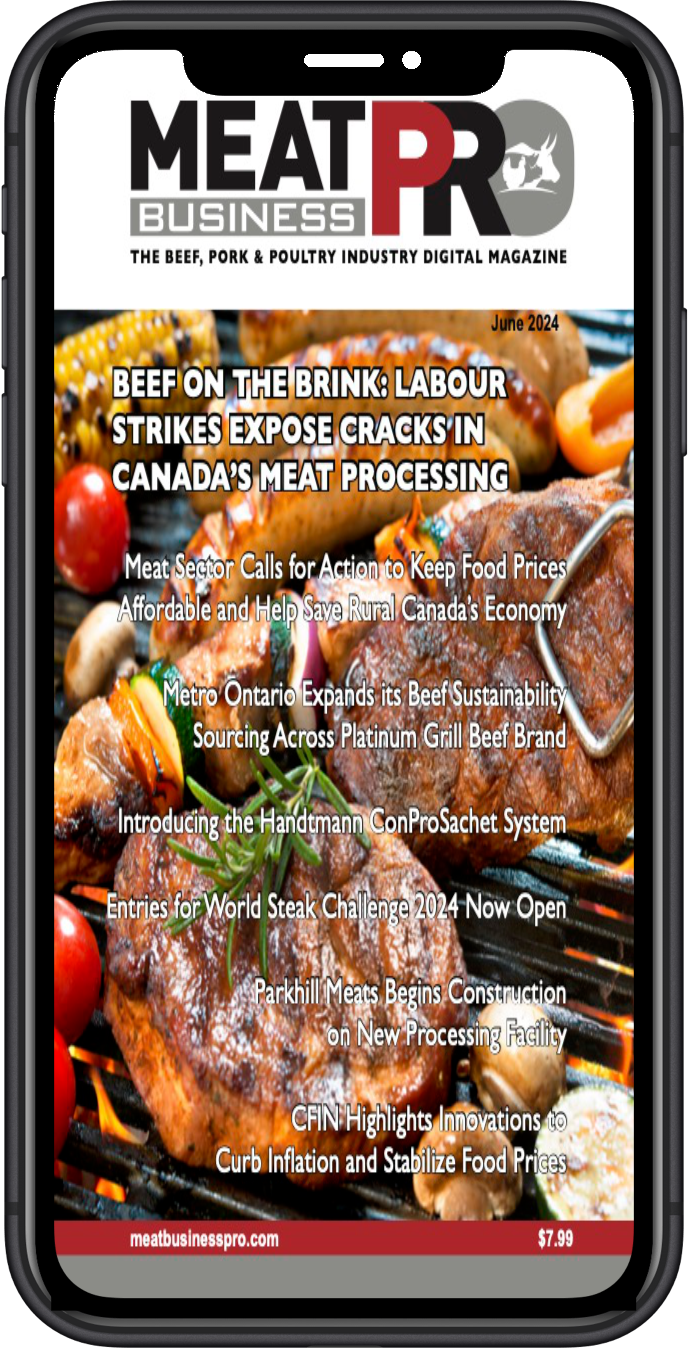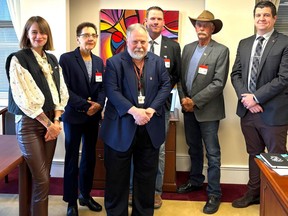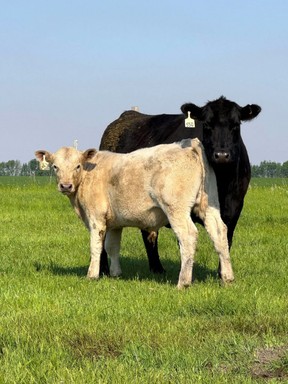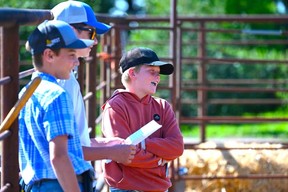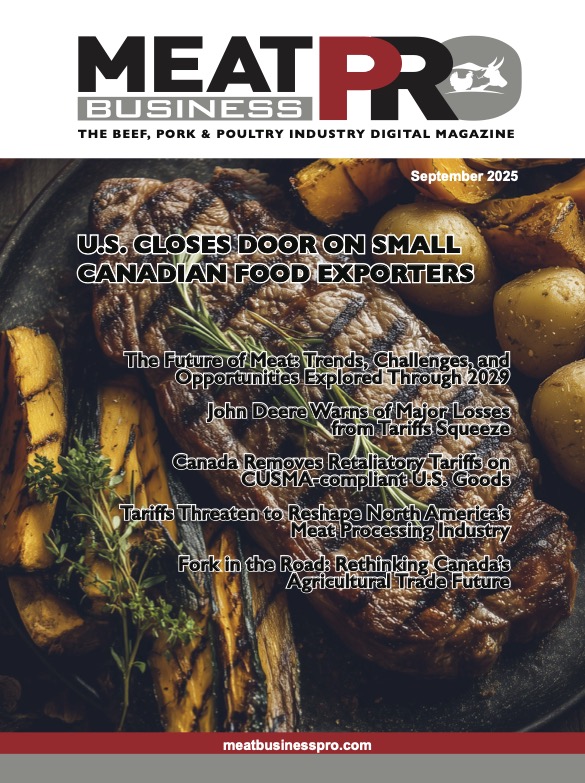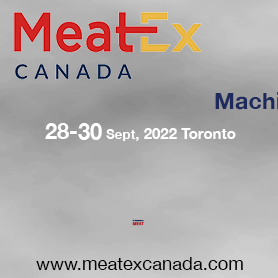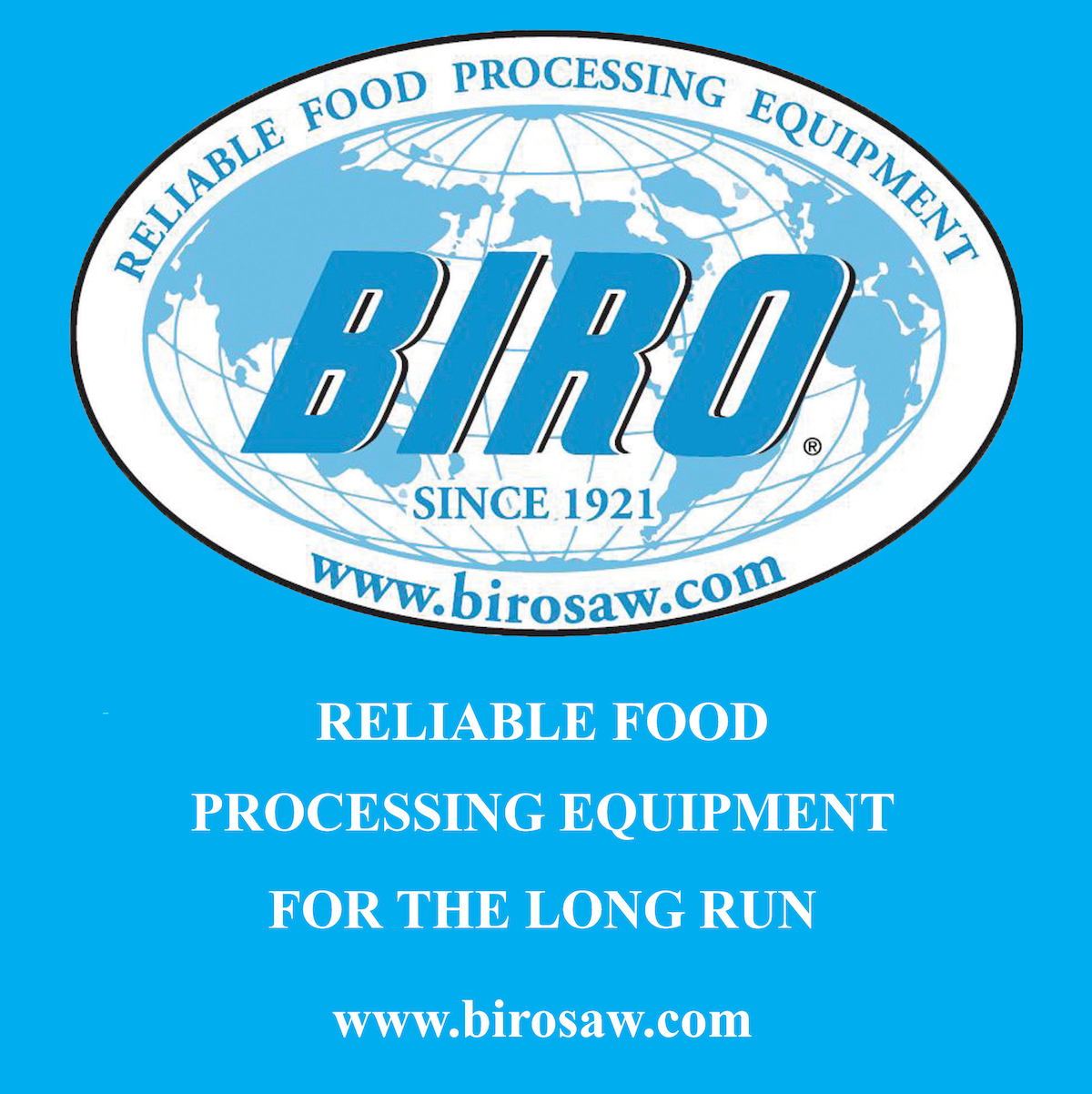Prairie Charolais producer joins CCA in Ottawa
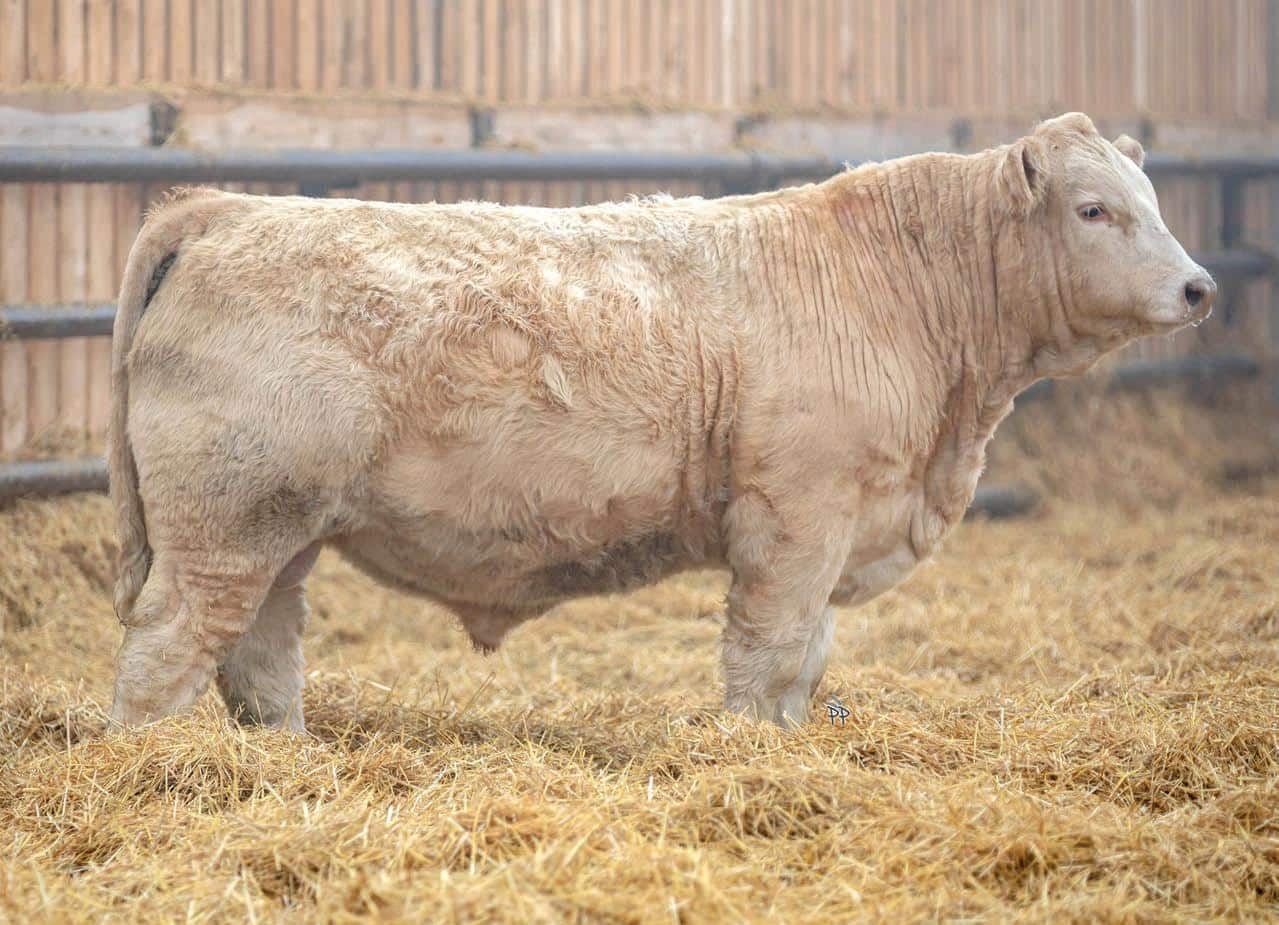
Andre Steppler of Steppler Farms Ltd, owner of the largest registered purebred Charolais herd in Manitoba, recently joined Manitoba Beef Producers and colleagues from across Canada in Ottawa
They stood shoulder to shoulder with the Canadian Cattle Association (CCA), making the case for producers before Members of Parliament, Senators, and senior government officials.
Andre called it both a privilege and an honour. “We can’t overstate the strength of the CCA team in Ottawa, and especially our advocacy lead, Jennifer Babcock. The passion Jennifer brings to our industry and her relentless fight on our behalf is unmatched. Her ability to command a room, shape a narrative, and gain the government’s attention makes her the true GOAT of the Canadian cattle industry.”
He urged fellow producers to take part in their provincial associations and continue supporting the CCA. “If you ever get the chance to witness their work firsthand, you will come away in awe.”
They stood shoulder to shoulder with the Canadian Cattle Association, making the case for producers before Members of Parliament, Senators, and senior government officials. PHOTO BY SUPPLIED /Winnipeg Sun During the Ottawa trip, Steppler and others met with seven MPs, two Senators, senior regional advisors to the Ministers of Finance and National Revenue, and the Chief Veterinary Officer of the CFIA. They also held several informal conversations on the Hill. For Steppler, the trip highlighted both the power of advocacy and the challenges ahead.
Steppler explained that while the CCA staff form the backbone of Canadian cattle advocacy, government leaders consistently want to hear directly from producers. “Whenever we meet MPs and Senators out there, they want to hear straight from a farmer,” he said. “Our CCA leads are invaluable, but when producers show up, boots on the ground, it connects differently. Every province takes its turn sending directors and producers to speak. We get to say what’s really happening at home, what’s coming in the near future, and what we need to prepare for.”
Commercial pair highlighting the strengths of crossbreeding. PHOTO BY SUPPLIED /Winnipeg Sun Trade at the forefront
Trade dominated the Ottawa meetings. Steppler emphasized that nothing shapes the future of Canadian beef more than access to markets. “There’s no doubt trade is in everybody’s world and everybody’s life right now. It’s such a dynamic file. We’re not only advocating for trade around the world, but we’re also mindful of our number one trading partner — the United States. That relationship must stay strong. If there’s anything that can change this industry for us in Canada, it’s a trade dispute with the States.”
He pointed to the upcoming CUSMA renegotiations as a critical moment. “This is the time to do the legwork. The relationships with our U.S. counterparts are good, but we must continue to maintain trust. That’s number one.”
Animal health and biosecurity
Animal health stood as another major file. Steppler described the risks of diseases such as foot-and-mouth and the ongoing challenges around bovine tuberculosis. “Animal health is a huge one. We’ve seen recent TB in Manitoba and the communication that comes with it. What does it mean for trade? How do we address this in policy? Meeting with the CFIA’s Chief Veterinary Officer in a roundtable was a rare opportunity. We expressed our concerns, asked questions, and got answers. That was positive.”
Managing business risk
The third major issue was business risk management. Producers face volatile markets, disease threats, and uncertainties in global trade. Steppler argued for tools that help the next generation succeed. “We need to add stability so they can handle a wildcard like foot-and-mouth or another outbreak. Livestock price insurance is one of the biggest tools on the table. It already exists, but it’s not cost-shared like crop insurance. That leaves cattle producers at a disadvantage because premiums are extremely high. We pushed hard for parity. Crop insurance and livestock price insurance are virtually the same type of program, so we need fairness.”
When the meetings ended, Steppler returned to his farm near Miami, Manitoba. Walking pens and checking cattle offered a stark contrast to the corridors of Parliament — but he felt reassured. “I’m extremely confident in the advocacy voice we left behind with the CCA,” he said. “I was in awe of their ability to network and get the ear of government where it matters. Some people mocked us on Facebook, saying we just flew down for a photo. That’s naïve. The picture proves we were there, but the real work takes place in rooms where participants discuss sensitive trade and policy files, not for public consumption online. Producers need to remember that.”
Back home, he felt at peace. “I don’t have to worry about trade today. Our counterparts are working for me. They’ve got my back. They’ve got my vote.”
Steppler stressed that results matter, not appearances. “We had scheduled meetings, but some of the most valuable conversations happened on the street. We’d run into MPs or staffers and strike up a 45-second conversation. That connection matters. That’s advocacy.”
Brayden Steppler with friends Nathan Armstrong and Hayden Collins, taking in the Manitoba Simmental Pen Show this summer. PHOTO BY SUPPLIED /Winnipeg Sun Encouraging the next generation
Even as he lobbied in Ottawa, Steppler’s phone buzzed with calls from producers back home wanting to buy cows. “It was exciting because the interest was there, and they were young guys — enthusiastic about getting back into the industry. That’s humbling.”
Steppler noted that Canada lost a generation of producers during BSE. “It was hard times. We lost so many. But if there’s one industry with room to grow, it’s cattle. With Crown land opportunities and grazing potential, growth can happen. Yes, cows are expensive right now, but pastures remain more affordable than grain land. It’s an entry point.”
Some challenge the idea of expanding the herd, fearing oversupply. Steppler disagrees. “If you think Canada’s cattle numbers can flood the world market, you’re loony. We’re not that big. The world wants our beef, and we can produce it.”
Steppler, 41, is raising three young children. “Even if they don’t take over, I want to prepare this industry so they have the option. That’s why advocacy matters.” For him, the work in Ottawa ties directly to the work at home. “It’s about building an industry that’s still there for the next generation. That’s not a given. We have to fight for it.”
The Steppler legacy
Steppler Farms manages between 500 and 600 purebred Charolais cows. The farm continues to grow through embryo transplants, turning commercial cows into purebred calf producers. The highlight each year is the bull sale.
“This will be the biggest ever,” Steppler said. “We’ll offer close to 200 bulls. February 11th is sale day at our heated sales barn arena. Every 30 seconds, a bull comes in live. We provide lunch for everyone and expect 250 producers to attend. That’s our harvest. That sales ring is my combine.”
The farm also runs a female sale in December, but the February bull sale remains the main event.
Steppler left Ottawa energized and hopeful. Trade, animal health, and risk management remain pressing issues, but he saw firsthand the strength of the CCA and the opportunities ahead. “This industry is all about the people who make it strong,” he said. “I cannot imagine Canadian agriculture without the powerhouse that is the Canadian Cattle Association.”
From Ottawa’s polished meeting rooms to the working pens at home, Steppler sees one clear connection: advocacy and production go hand in hand. One ensures the other has a future.
Harry Siemens is a farm journalist, podcaster, speaker, writer and communicator, and a guest writer for the Winnipeg Sun.
Our September 2025 Issue
In our September 2025 issue, Beef Advocacy Canada relaunches new platform, U.S. shuts the door on small exporters, The future of meat, John Deere tariff warning, Shrugging off high beef prices, Geopolitics and Bird Flu, The reshaped meat processing industry, Rethinking Ag trade, and much more!





